Last Chance to Catch NYC's Holiday Notalgia Train
We met the voices of the NYC subway on our nostalgia ride this weekend!


For the last five years, German artist Bettina WitteVeen has been working on a site-specific installation inside the abandoned Brooklyn Navy Yard Hospital building. The photographic exhibit, “When We Were Soldiers… once and young (WWWS),” opens Saturday and will be free to the public with advance tickets. While urban explorers will be likely drawn in by the rare access to this part of the Navy Yard property–in fact, it’s the first time an artist has been allowed use of the hospital building known as R95–the exhibit itself also deserves additional explanation. A press visit on Thursday morning allowed us to hear directly from WitteVeen herself, who hopes this artistic exploration of war combat can incite a dialogue about redemption.
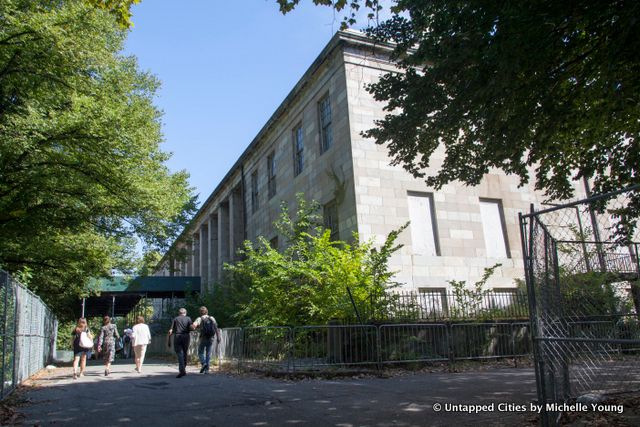
The building itself was deliberately selected–WitteVeen was looking for a hospital to serve as a metaphor for the body and to represent the types of trauma sustained in warfare. In fact, the rooms are labeled literally: “Injuries to the Head and Face,” “Injuries to the Upper Torso, “Injuries to the Lower Torso.” Elements of the building become incorporated into this overarching metaphor–with a photograph of a soldier without lower limbs placed inside the original bathroom of the building with WitteVeen noting the difficulty of maimed soldiers in taking care of the very basic activities of human nature. In reverse, elements of the decaying building also represent this exploration. In the hallway, a clear plexiglass wall provides a look into a staircase propped up by scaffolding–it too does not have legs, WitteVeen points out.



The ultimate goal for WitteVeen, though, is a utopian one: the abolishment of war. She believes that human beings are “not hard wired for war,” based her own anthropological, neurological, and archeological research, and she feels “very strongly we can leave it behind us.” But first, as a society we must collectively “understand this phenomenon in order to leave it behind.”
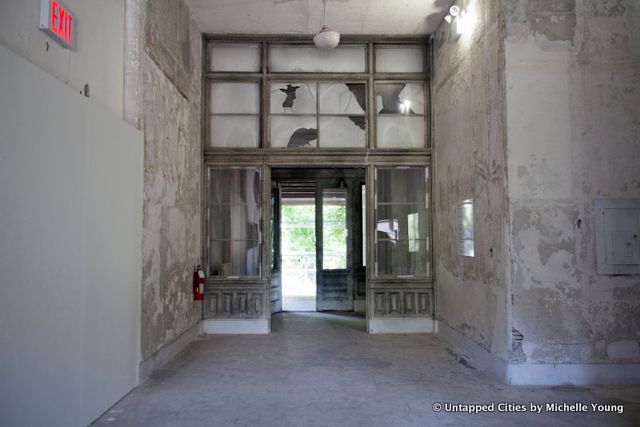

The content of the exhibit is framed for this purpose. “For me it’s art, it’s not a documentary,” WitteVeen explains. The photographs, organized into clusters, cross the historic spectrum from the American Civil War, the Crimean War, the First and Second World Wars, the Korean and Vietnam Wars and the ongoing conflicts in Afghanistan and Iraq. Fields and flowers form another main theme, all photographs by WitteVeen of former battlefields.
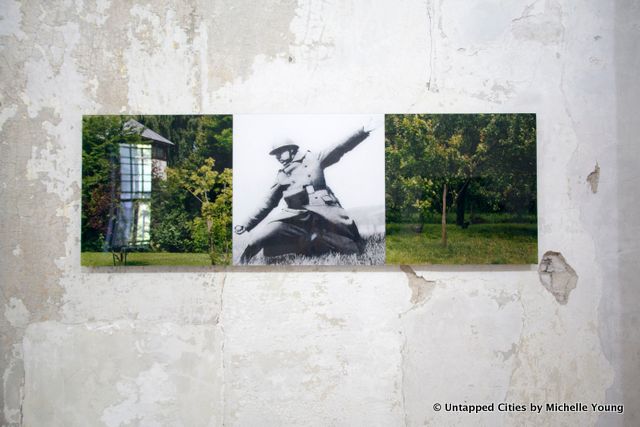

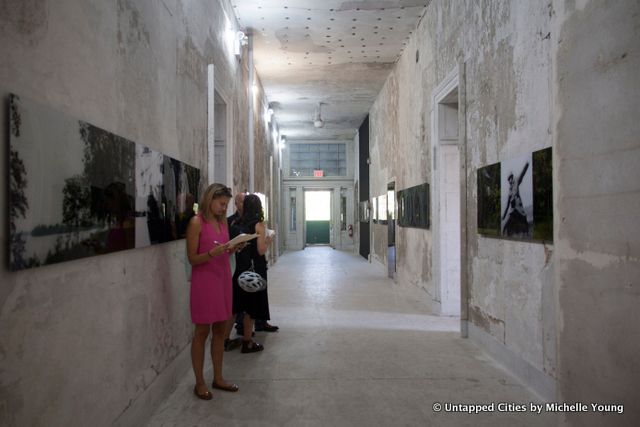
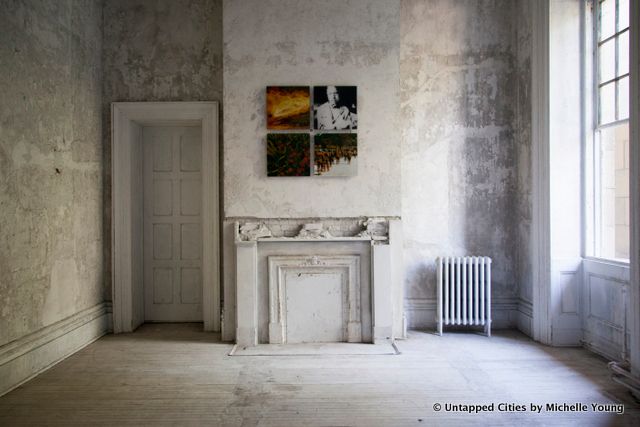
The image themselves are heavily doctored though analog methods (no Photoshop here) and deliberately done to “bring down the visual images to be quiet.” WitteVeen wants to show the faces behind the emotions, the unnoticed moments within an action shot–all which form an individual’s and society’s collective trauma. “I quieted [the photos] down so you quiet down so you open up hopefully so we all become more peaceful and better,” she explains. She also deliberately avoided images that are outright shocking, believing that viewers get a “flight or fight” reaction upon seeing these types of images, and won’t “want anything to do with” the visuals.

WitteVeen at the exhibit
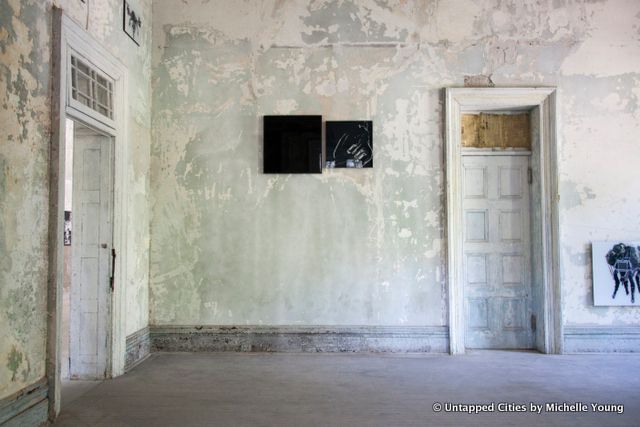
All of WitteVeen exhibitions have a black square, representing a question mark
Yet, WitteVeen is not so naive as to dismiss warfare all together. In front of a present-day photograph of a building in Dachau concentration camp, she says “As a German I’m grateful for the Americans for liberating [Europe during WWII]. Sometimes military action is necessary.”
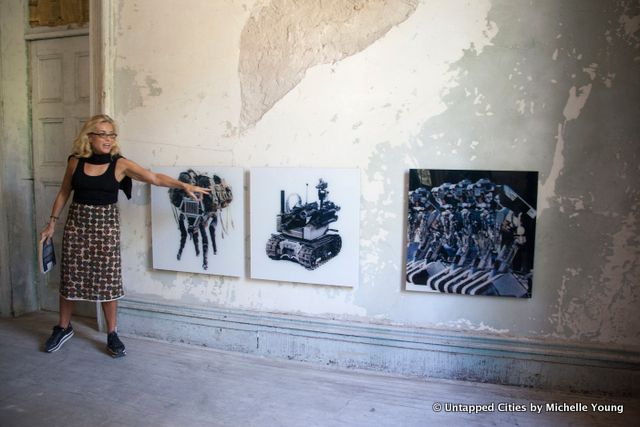


The last room on the upper floor of the exhibit is entitled “War Invisible,” and explores the mechanization of war through drones and robotic devices, and the conflation even soldiers with the new reality. She recounts how soldiers personify the robots and cry when they are destroyed in the field.
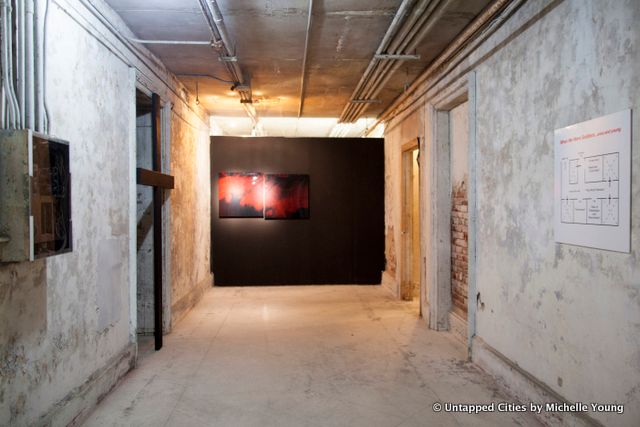
The lower level, technically the first level of the hospital, has the feeling of a basement. The rooms are former cells that held psychologically disturbed patients. One of these rooms, “Anonymous” explorers rape as a war crime, showing the portrait of a woman, wed as a teen war bride during World War II, who committed suicide later. It’s a timely topic, given that the documentary The Uncondemned about the first prosecution of rape as a war crime, premieres in October at the Hamptons Film Festival.
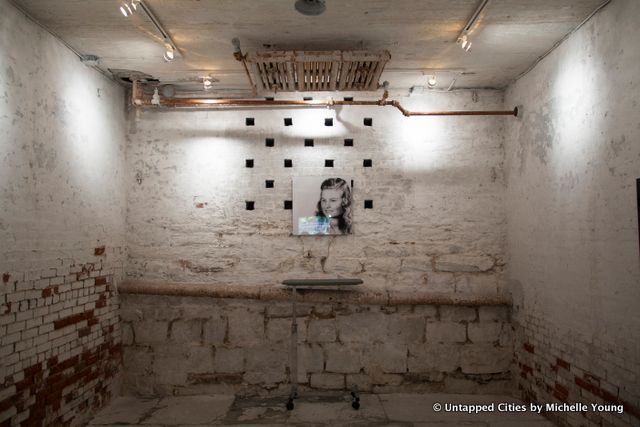
In front of other cells, she has placed large, black “Crosses of Suffering” making visible the crosses formed through negative space between photographs on the upper floor. WitteVeen is not a Christian but she sees the cross as an important symbol in war that the United States itself is at a crossroads.

The sound of a Bach cantata wafts through the air, emerging from one room modeled after a cathedral in Berlin. The cross in here, made of a combination of photographs, forms the centerpiece of the exhibition invite as well with images of a WWI soldier, an x-ray of an injured skull, a battlefield in France, stained glass windows from the Berlin church, and something from Brooklyn: the Fort Greene Prison Martys Memorial during a full moon. The “church” is meant for you to absorb what you’ve seen.
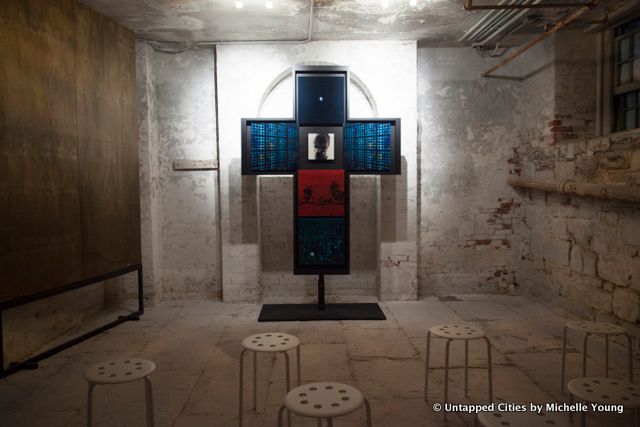
The final room, “Memories of the Heart” just before the exit, represents wounds that have been healed with panoramic images of a garden in Yalta through which barbed wire runs. For WitteVeen, it’s meant to show that war leaves wounds but can heal, but she leaves everything open to interpretation. “Art has visual power. It’s supposed to be an experience.”
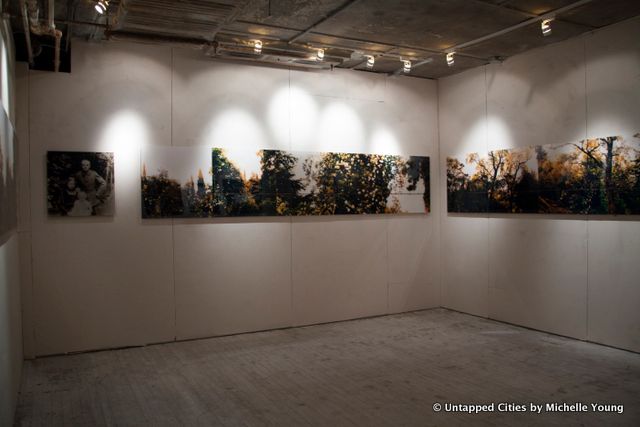
The R95 building, and its environs, will be transformed into a media campus and more studios in a long-term redevelopment plan from Steiner Studios and the Brooklyn Navy Yard Development Corporation. The exhibit was produced in partnership with Steiner Studios.
“When We Were Soldiers… once and young (WWWS),” will be open every day from 12-6pm, with advance tickets from September 19th to October 24th.
Subscribe to our newsletter